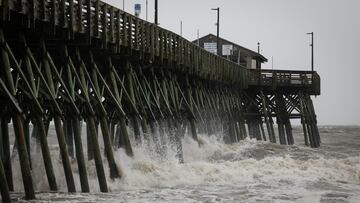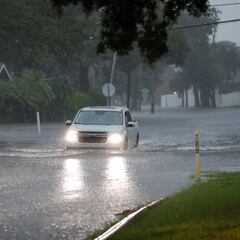What is a tropical depression? The National Hurricane Center warns one could evolve this week
Despite being the weakest form of tropical cyclones, they can still produce heavy rainfall and have the potential for tornadoes.


A tropical depression is the initial stage of a tropical cyclone, characterized by a low-pressure system with maximum sustained winds of 38 mph (33 knots) or less. These systems originate over warm tropical or subtropical waters and feature organized deep convection and a closed surface wind circulation around a well-defined center.
The formation of a tropical depression begins when a thunderstorm develops a low-pressure circulation. This process is typically observed by the National Hurricane Center (NHC), which assigns a numerical designation to the system, such as Tropical Depression One (TD 1), and continues sequentially throughout the hurricane season.
The development of tropical depressions is influenced by warm ocean temperatures, generally requiring water temperatures of at least 78–80°F to provide sufficient heat energy for the cyclone’s development.
Why depressions are dangerous
Tropical depressions are often the precursors to more intense tropical storms and hurricanes, as they can strengthen if conditions remain favorable. Once the sustained winds of a tropical depression exceed 39 mph, it is upgraded to a tropical storm and given a name from a predetermined list.
Related stories
The NHC monitors these systems closely, as they can evolve rapidly and pose significant threats to coastal areas.
The impacts of tropical depressions can be severe, particularly when they move slowly. Slow-moving tropical depressions can lead to prolonged periods of heavy rain, resulting in flash flooding and damage comparable to that caused by stronger tropical storms or hurricanes. An example of such an event is Tropical Storm Allison in 2001, which caused significant flooding and damage in Texas even after weakening to a tropical depression.


Complete your personal details to comment